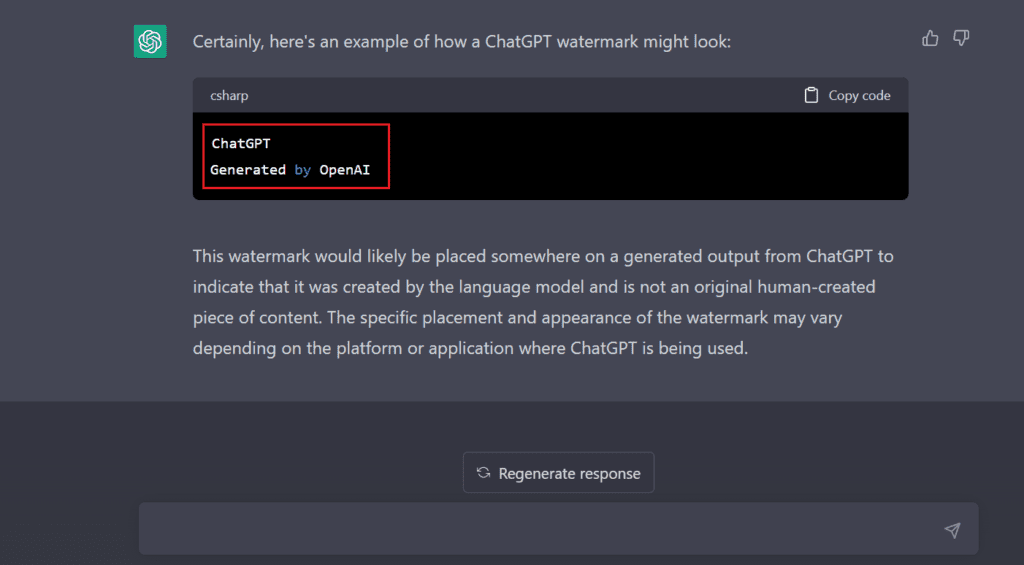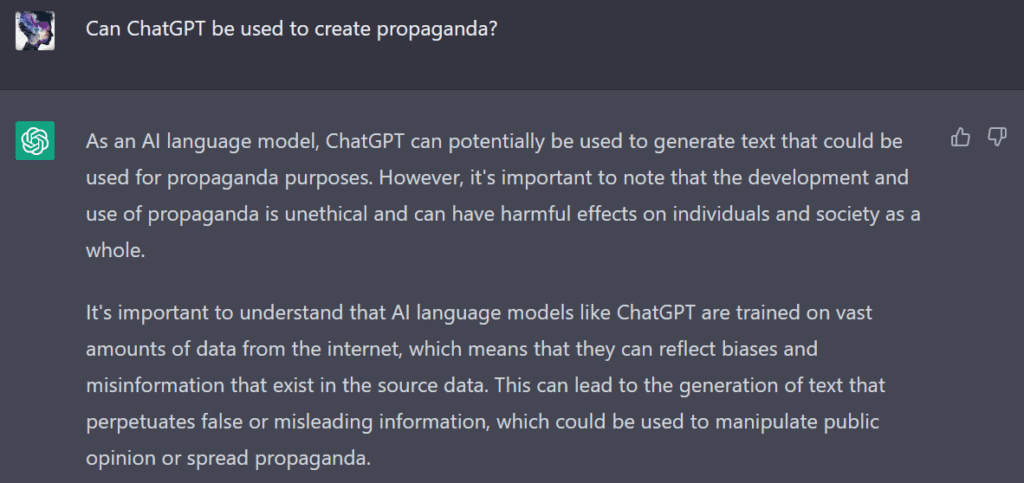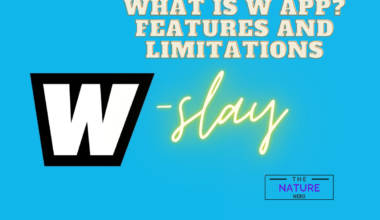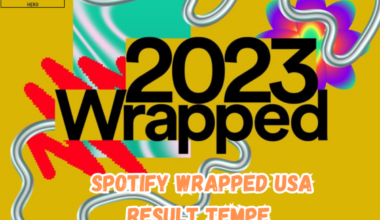ChatGPT, developed by OpenAI since its launch in November 2022, constantly upgrades its capabilities and functionalities.
This article illuminates Cryptographic Watermark and the working of Watermark in ChatGPT.
Continue reading to learn how to detect ChatGPT Watermark and ways to bypass it.
Table of Contents Show
What Is ChatGPT Watermark?
ChatGPT Watermark refers to the text or code embedded automatically into the contents generated by the ChatGPT.
Here’s an example of how the Watermark will appear.

Additionally, reports are emerging that OpenAI is considering implementing a cryptographic Watermark in ChatGPT.
Watermark will be an unnoticeable secret signal in the choices of words, which we can use to prove later that, yes, this came from GPT, says Scott Aaronson.
Importance Of ChatGPT Watermark
The need for a Watermark comes from the fact that it can create information that is difficult to identify from human-written content.
Without the Watermark, it can create issues like plagiarism, ethical concerns and authenticity.
Students and writers can generate plagiarism-free content from ChatGPT, which can be a severe issue of academic integrity.
Furthermore, ChatGPT can be used to create misleading and false information, which can be a significant issue in the upcoming days.
Actually, ChatGPT has already caused controversy by generating unethical, biased, and damaging instructions.
Here, ChatGPT itself says it can generate text which could be used for propaganda purposes.

So, the Watermark can help prevent academic plagiarism, the mass generation of propaganda, and proof of authentication.
He further illustrated that storing all of GPT’s outputs in a giant database and then consulting the database later could be in high-stakes cases involving law enforcement.
Additionally, it would raise some serious privacy concerns whether GPT generated a given candidate text without potentially revealing how other people have been using GPT.
Therefore, Watermarks will be the best option rather than applying the database approach.
How Does ChatGPT Watermark Work?
The working of ChatGPT Watermark is rather complicated and can be confusing for many users.
However, it can be explained in three simple steps described below.
- ChatGPT generates a response to the user’s prompts.
- Then, the programming code of ChatGPT adds a Watermark, which can be text or code embedded in the text.
- The response, including the Watermark, is then given to the user through the chosen communication channel.
Furthermore, Scott Aaronson writes in his blog “My projects in OpenAI” in detail about the working of the ChatGPT Watermark.
He explains how the concept of Tokenization and Cryptographic Pseudorandom Function will work in creating a Watermark.
It is possible to Watermark text to make it simple for a system to identify whether an AI text generator created it by changing the word usage pattern.
Pseudorandom distribution of words makes AI content Watermarking undetectable.
It refers to the word distribution maintaining a random appearance similar to regular AI-generated text.
How To Detect And Remove ChatGPT Watermark?
The Watermark may promote openness and demonstrate that AI models generated the replies, but it is not foolproof.
We can detect the Watermarks in different ways. Some of them are described below.
- We can look for a consistent logo or text style across multiple responses to confirm if it is a part of the response or a Watermark.
- We can also detect the Watermark by looking for a consistent signature or Pseudorandom numbers.
- You can also contact the organization using ChatGPT to detect the presence of the Watermark.
Furthermore, users can also easily modify or remove the Watermark accidentally or intentionally.
You can also remove the Watermark by paraphrasing the response in another AI tool.
Another option is to use an older API version that did not include the Watermark or a modified API version designed to remove the Watermark.
The Bottom Line
Open AI has not yet imposed a Watermark in the responses of the ChatGPT.
But a Watermark is needed to enhance transparency and trust in AI-generated content.
And even if Watermarks are imposed, we can easily remove or modify Watermarks using simple strategies.


